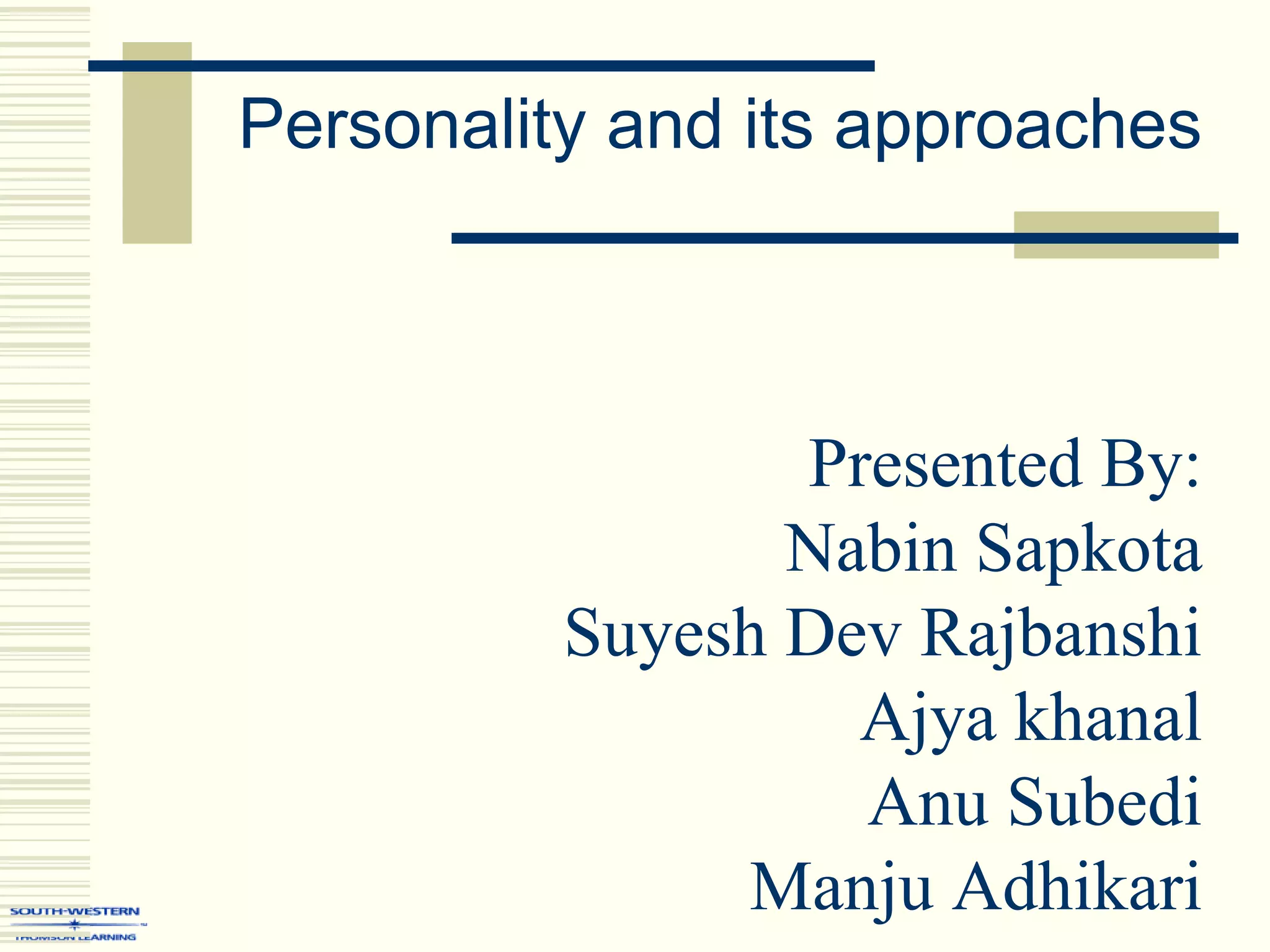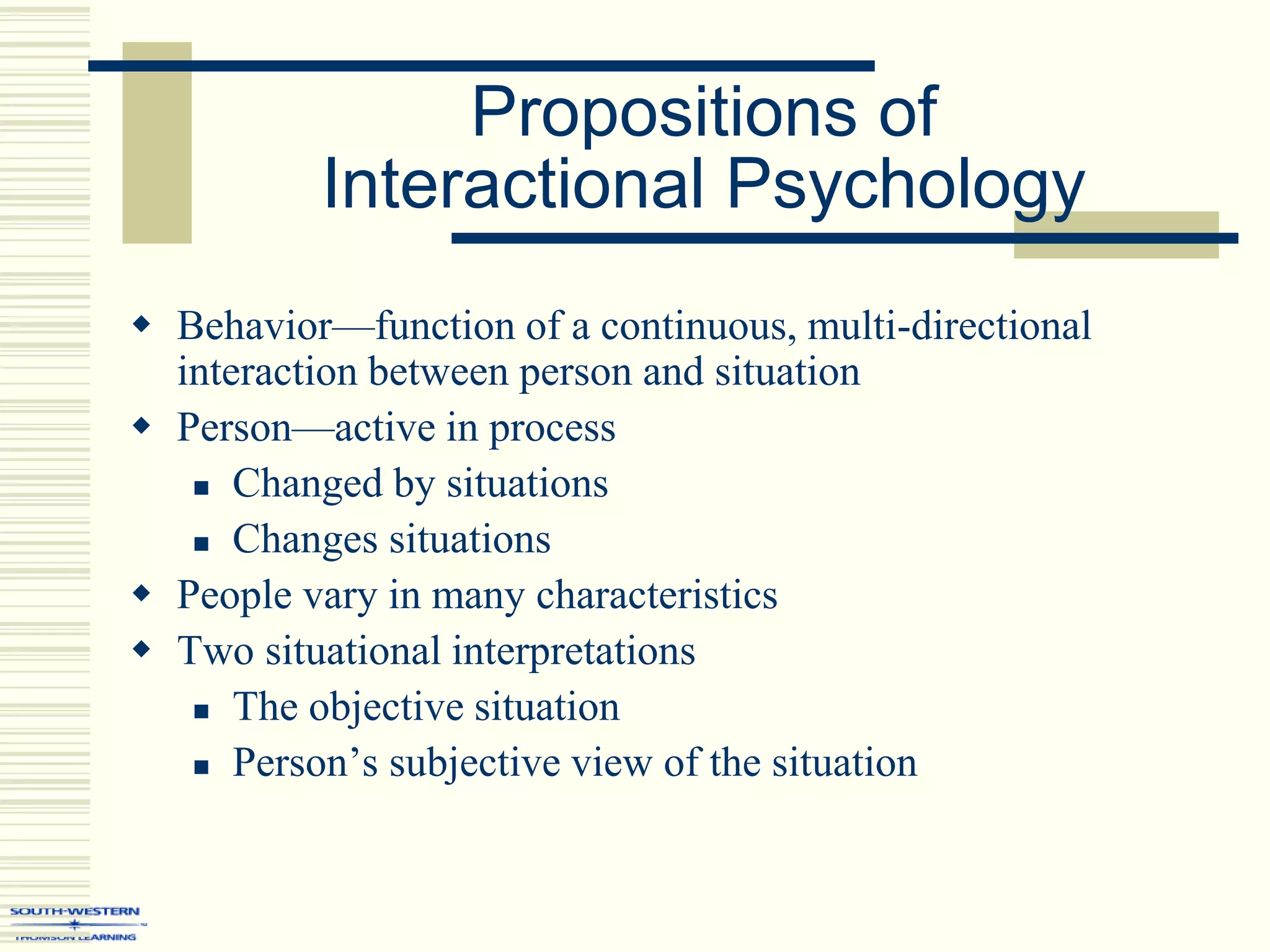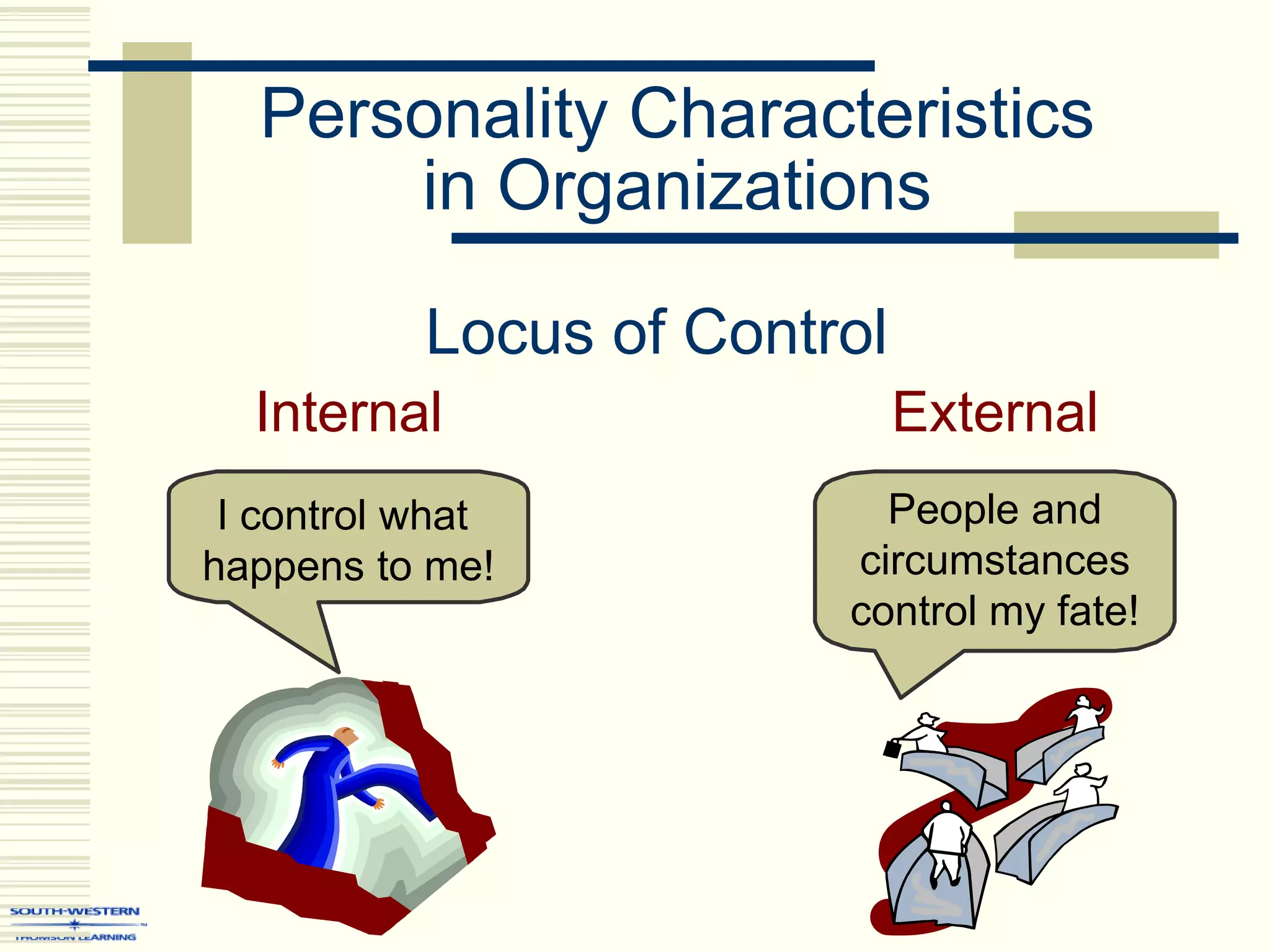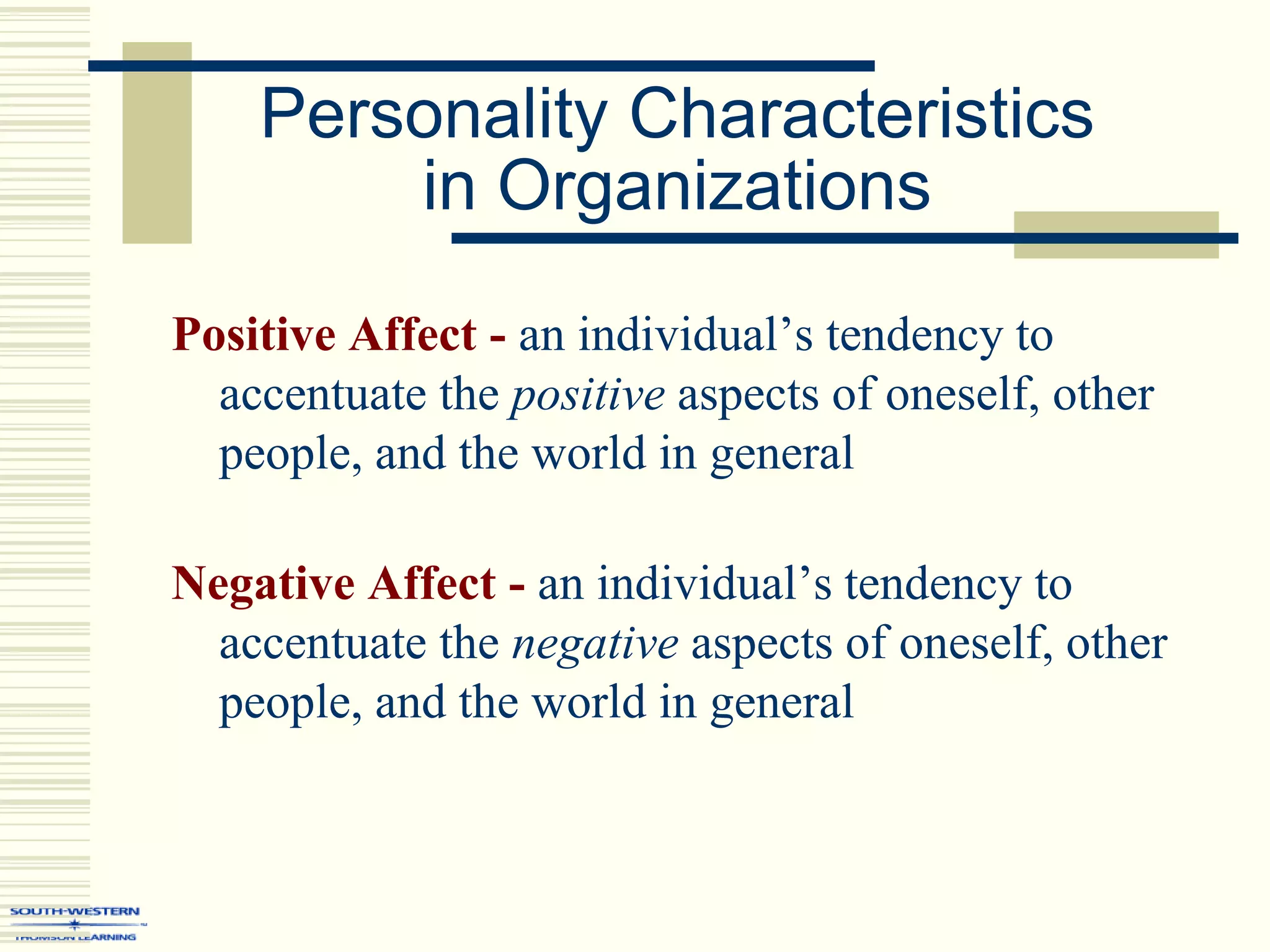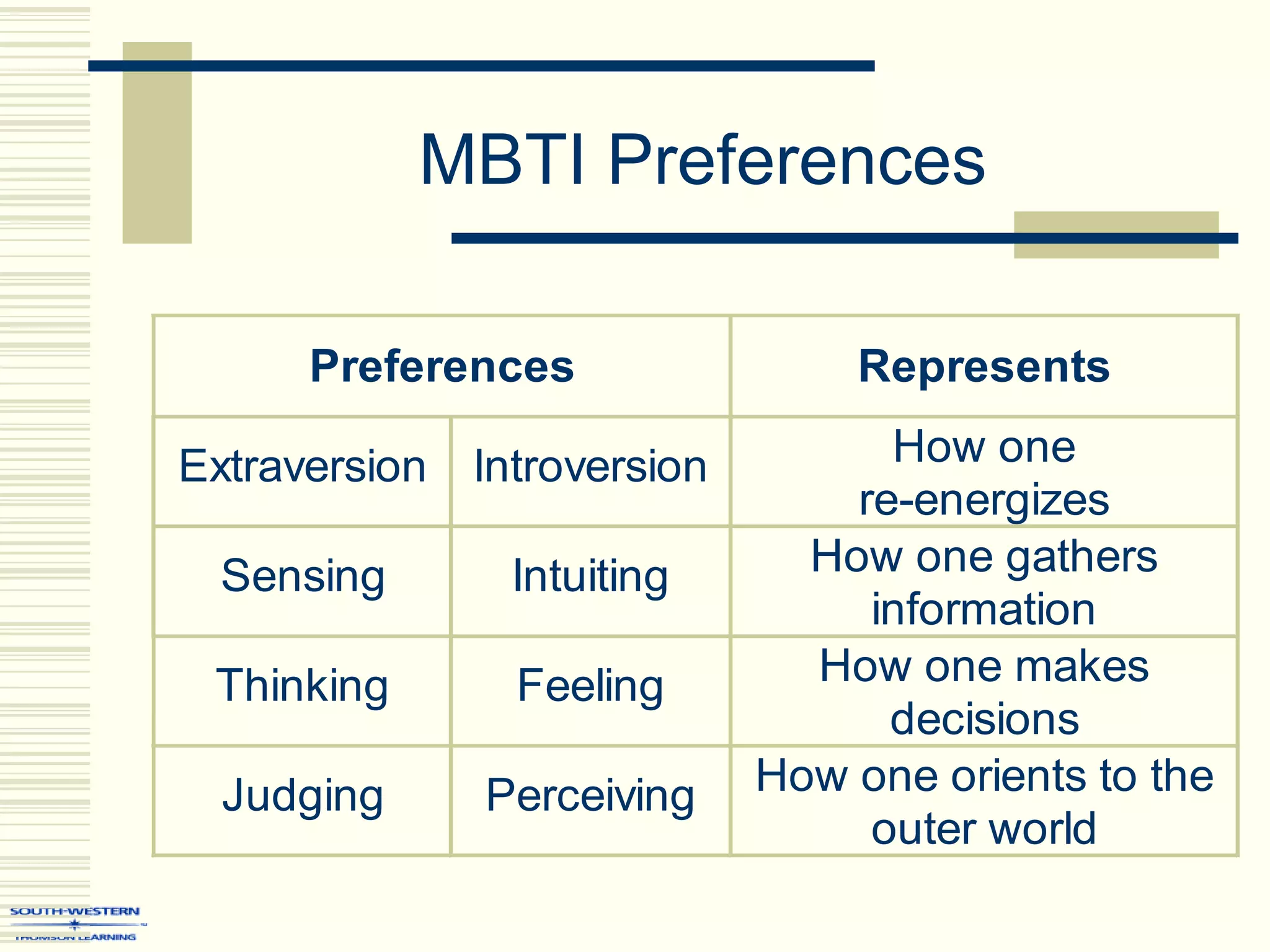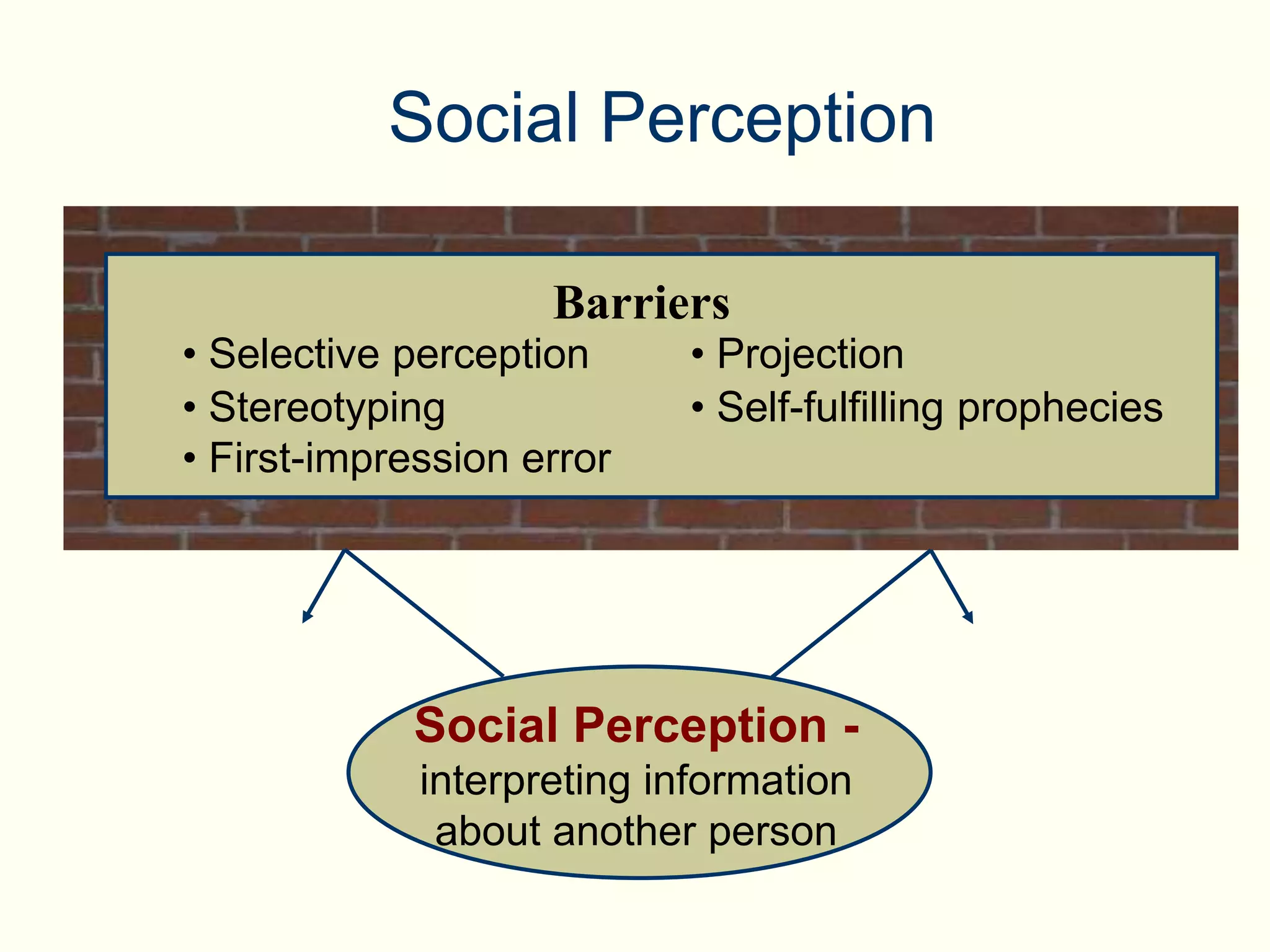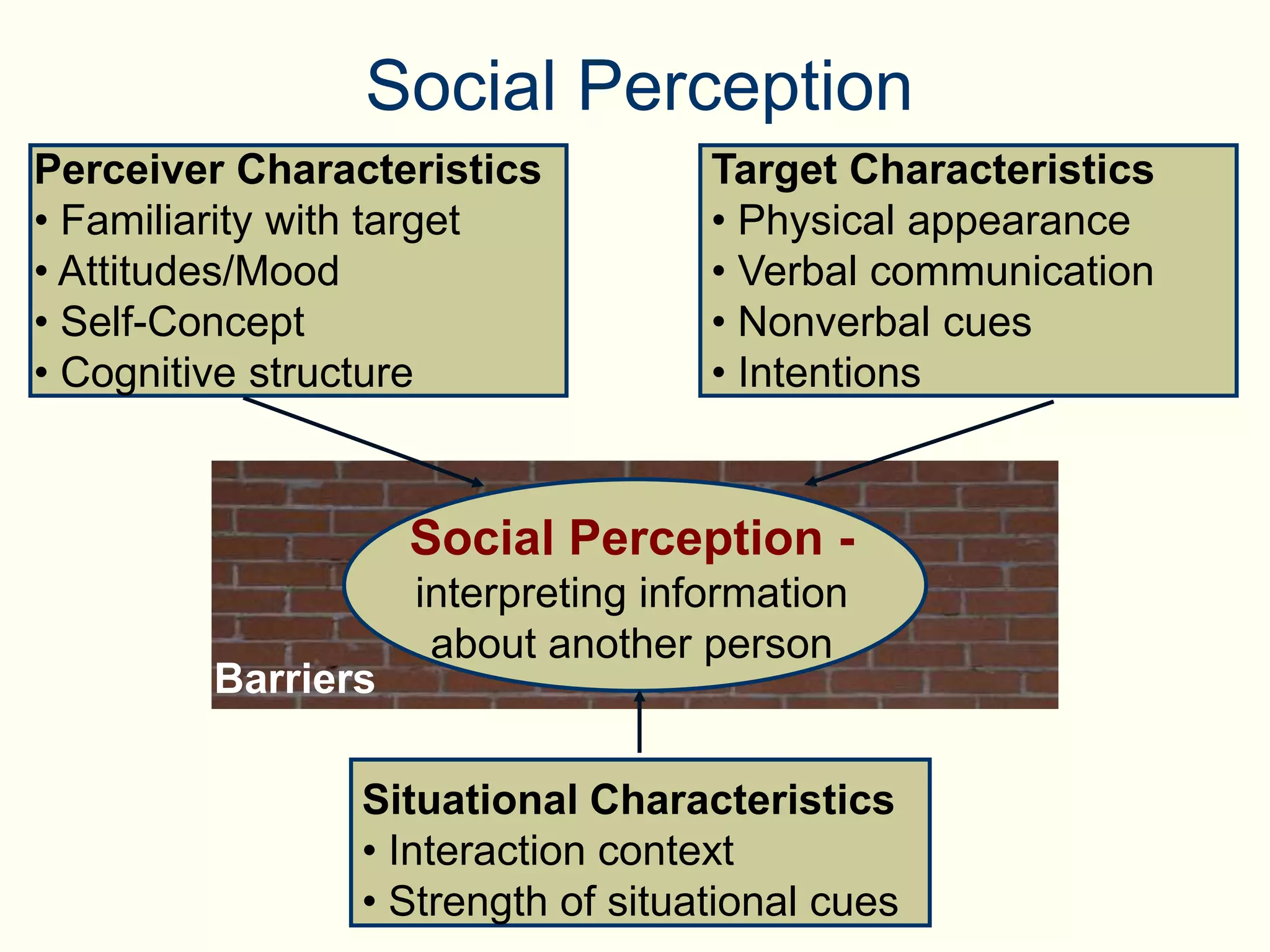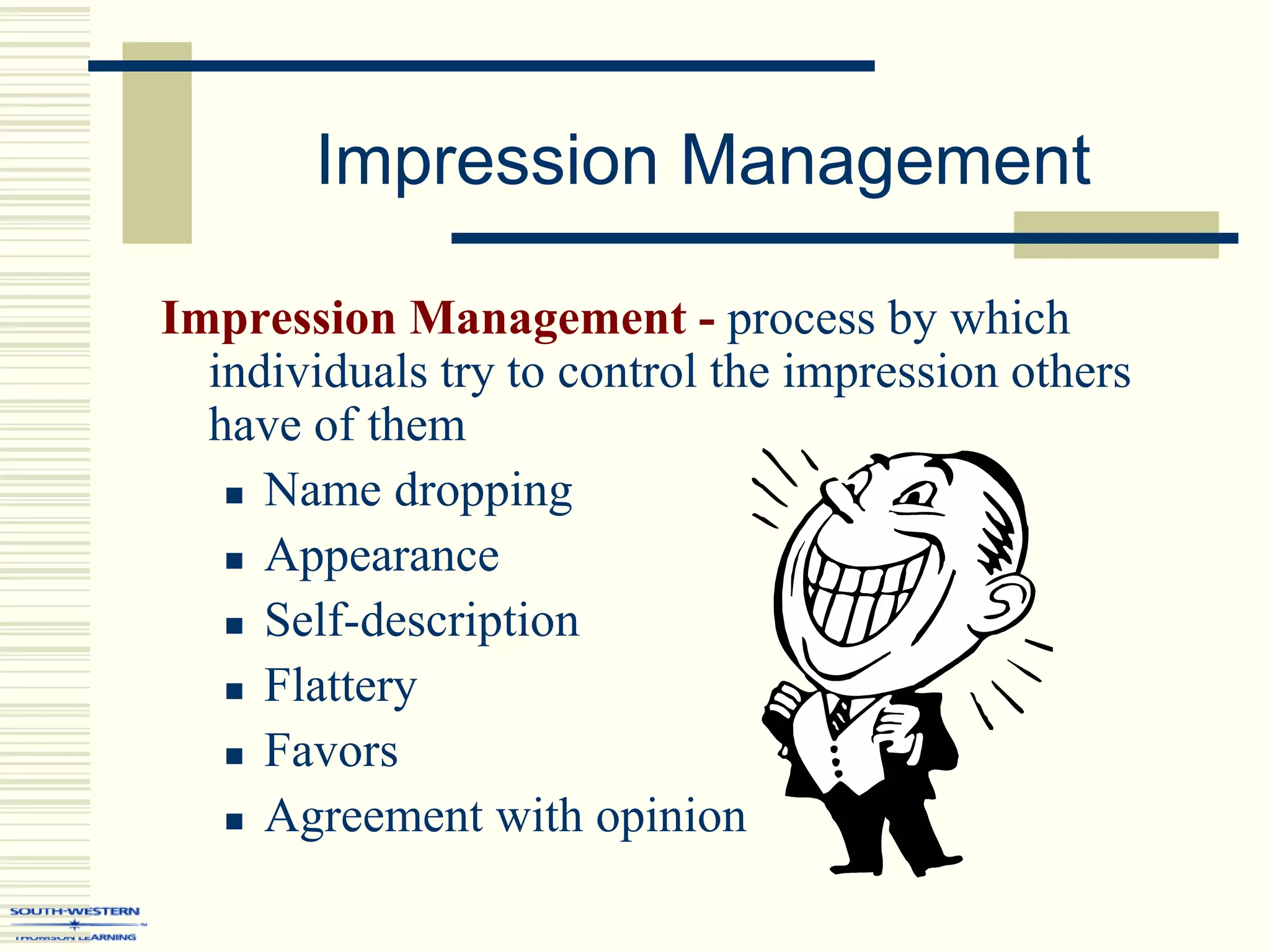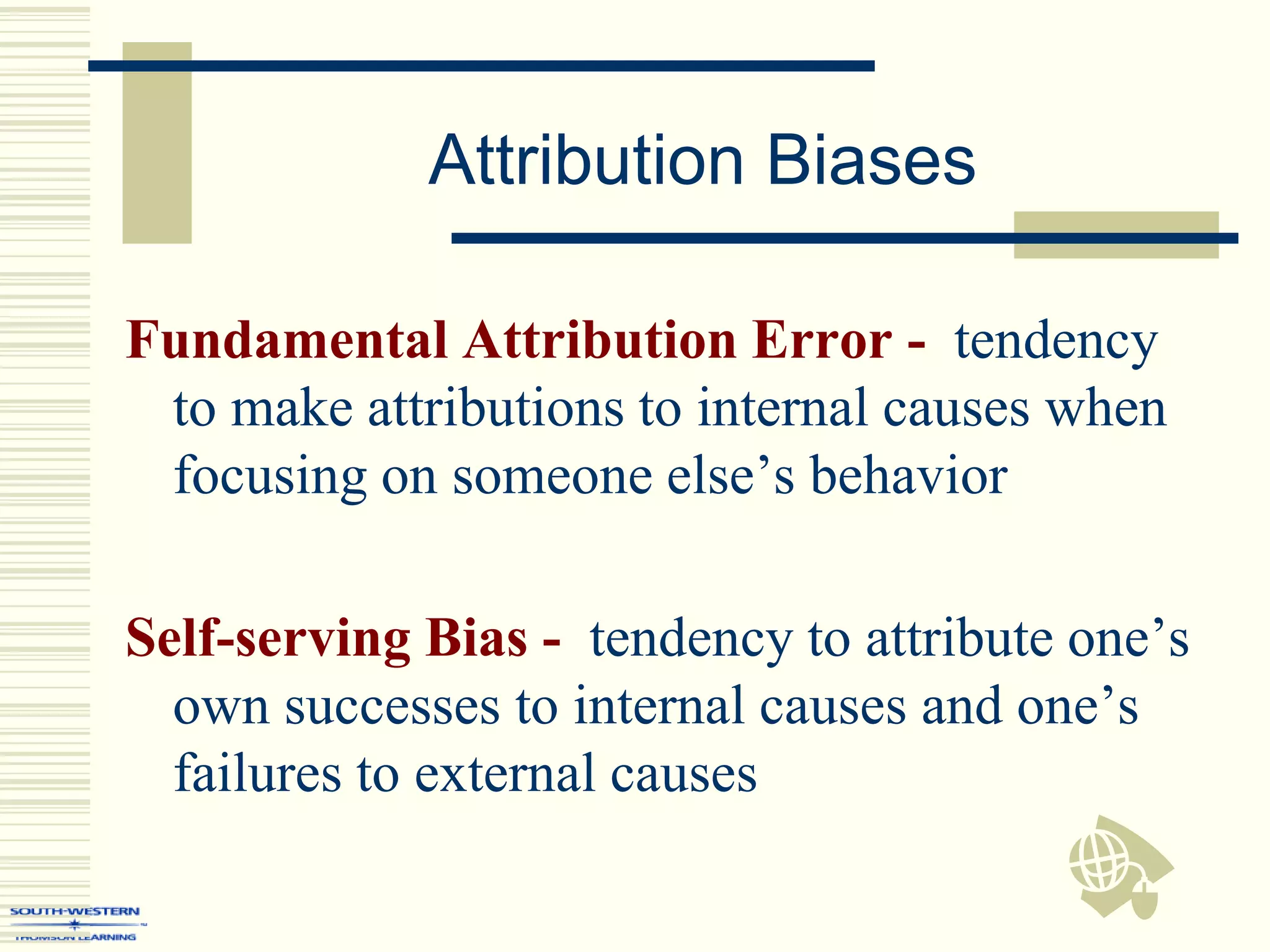This document discusses personality and its approaches. It defines personality as a relatively stable set of characteristics that influence an individual's behavior. It describes several personality theories including trait theory, psychodynamic theory, humanistic theory, and integrative approach. It also discusses the Big Five personality traits and how personality characteristics influence behavior in organizations. It examines concepts like locus of control, self-efficacy, self-esteem, self-monitoring, positive and negative affect. The document also looks at how personality is measured and discusses the Myers-Briggs Type Indicator. Finally, it covers topics like social perception, impression management, and attribution theory.
